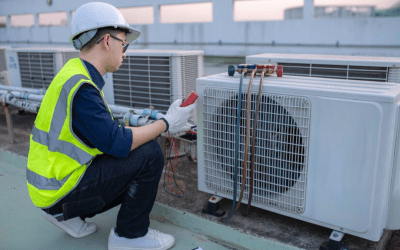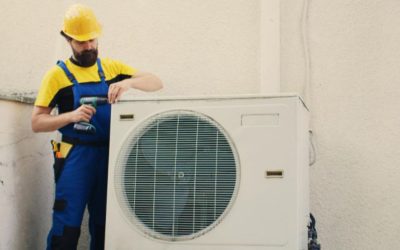Do you know what your emergency heat setting is? Many homeowners believe they know the answer to such an obvious question, but they may not truly understand how it works. When winter rolls around, you’re going to want to know the answer to this all-important question, particularly if you live in an extremely frigid area.
You may have heard many things about the emergency heat function on your furnace over the years. As a responsible homeowner, you should really know how this setting works and when it should be used appropriately. This can help you to extend the life of your furnace, lower your electric or gas bill, and make your home more comfortable.
To learn a little bit more about this essential function, you can take a look at our crash course in emergency heating below.
What is emergency heating?
The emergency heat setting on your furnace can serve multiple purposes. In many instances, homeowners are actually utilizing this function inappropriately though. You may be tempted to turn on this setting when you enter a home that’s been vacant for a while. Most people do this because they know that emergency heating can warm up space extremely quickly. Unfortunately, this isn’t the best time to use it.
The emergency heat setting on your furnace is designed to help warm the home when your heat pump is no longer working effectively. This could be due to a much-needed repair, an extra chill in the air, or some other occurrence that renders your heater unable to perform its job effectively.
It should be noted that emergency heating is often separate from supplemental heat. The latter option is controlled by an outdoor thermostat. Once that thermostat reaches a specific temperature (usually anything below 35 degrees Fahrenheit), the supplemental heat system begins to help the primary heat pump to remove the chill from the incoming air. This is an automatic function that helps to keep the interior of your home more comfortable.
Emergency heat is a manual setting that homeowners can turn on and off at will. It is capable of heating an entire area very rapidly, but it is less energy-efficient than your usual heat pump would be. When this function is turned on, the emergency heat setting begins supplying all of the necessary heat while the heat pump takes a break.
This is a great option for when the heat pump is broken and can no longer heat the house. However, you should be wary of using it too often. After all, the emergency heat setting is certain to cost you a pretty penny with extended and frequent use.
How does emergency heat work?
Now that you know what the emergency heat setting does for your home, you may want to understand how it actually works. The first thing you should know is how an average heat pump works for your home. These are more energy-efficient and are designed to keep your home warm on a regular basis.
A heat pump pulls heat from the outside air into the home to keep it warm. As you can imagine, this becomes a real problem when the outdoor temperatures start to dip below freezing. There isn’t much warm air to be pulled indoors. Supplemental heat helps to make up for what this freezing air is lacking.
Emergency heat works a little differently. A home that runs on electricity will have emergency heat settings that are run on electrical resistance coils. Homes with gas appliances may simply burn natural gas in order to create the appropriate amount of heat. This generates all of the heat that enters the home, completely bypassing the heat pump.
How do you know if the emergency heat is on?
For most homeowners, the emergency heat setting should be a manual function. You can turn it on and off as you see fit, depending on the needs of your home and how effectively your unit is currently running. Supplemental heat will often kick on automatically, but emergency heat requires a little more thought.
If you see a red light on your furnace, it’s probably an indicator that your emergency heat is on. A red light on the furnace is probably an indicator that the heat pump is malfunctioning to some degree. Whether it’s frozen due to the chillier weather outside or it’s in need of a major repair, this red light should be investigated by a professional HVAC repairperson.
Depending on your thermostat, you may also find it marked somewhere on the screen that your furnace is running on emergency heat.
Why shouldn’t you use emergency heat all the time?
The largest disadvantage to using the emergency heat setting is the overall cost. This is particularly true for individuals who have an electric furnace. Turning this function on regularly can lead to electric bills that are almost double the usual rate at times.
This setting will require your furnace to work extra hard and produce lots of heat in a relatively short period of time. Compared to the usual functioning of the unit, this sudden burst of heat will require more energy than the slow and steady production of warmth typically generated by the heat pump and supplemental heat. There’s a high cost associated with this extra burst of energy.
Will the same cost difference hold true if your furnace runs on gas or oil? It’s quite possible that you will see some price difference in your monthly bill cycle. However, the price of gas and oil fluctuates over time, so it’s a little more difficult to determine the exact cost difference when utilizing this type of power.
While you may still see a significant price increase, it isn’t likely to be as drastic as it will be with an electric heating system.
How can I save money without emergency heat?
Some homeowners simply can’t fathom living their daily lives in a home that is anything less than toasty. Unfortunately, the coldest days of winter may not allow for this possibility unless you flip on the emergency heat setting. In an attempt to save some money on your electric or gas bill this month, you may want to try implementing some other strategies to keep yourself warm.
The first step toward creating a warmer home is to take a more common-sense approach to your day. You can put on a jacket or extra layers to keep your body warm while you’re up and moving around. Wear a thick pair of socks, a beanie hat, and multiple shirts to keep your body warm and comfortable. You could even go as far as to wear gloves, but many people would find this too inconvenient on a regular basis.
Extra blankets can be draped over the arm of the couch or folded up in a storage ottoman. Providing a few layers of warmth for yourself can make you feel a little more comfortable without having to accommodate the cost of the emergency heating system.
Homes with a built-in fireplace or wood stove can create a lot of heat very quickly. Don’t hesitate to set up a bundle of kindling or firewood to create a warmer living area the fastest and cheapest way possible. The rising heat will help to warm the upstairs of your home as well as the downstairs.
If you don’t have a fireplace, a small space heater can also warm up the main living areas of home relatively quickly. You may opt for a kerosene heater or a portable electric version, depending on your budget and the specific area. A kerosene heater can heat a room efficiently, but it may cause carbon monoxide build-up in a small and enclosed area. Keep a carbon monoxide detector nearby or make sure to crack a window to allow fresh oxygen inside.
Individuals with small children may want to avoid space heaters because they can quickly burn curious little hands. Alternatively, you may want to set them in an area protected by baby gates or some other type of enclosure that will keep children and pets at bay.
When you start looking at using small portable space heaters, you should consider trying to live in just one or two rooms of the home. If you have multiple living rooms, dens, and game rooms, try to select just one for everyone in the home to enjoy during these coldest months. All other rooms in the home should have shut doors to help prevent your furnace from overworking.





